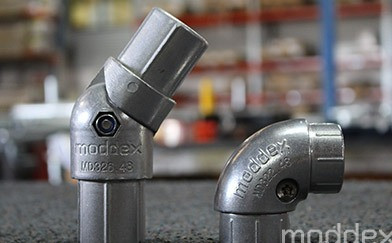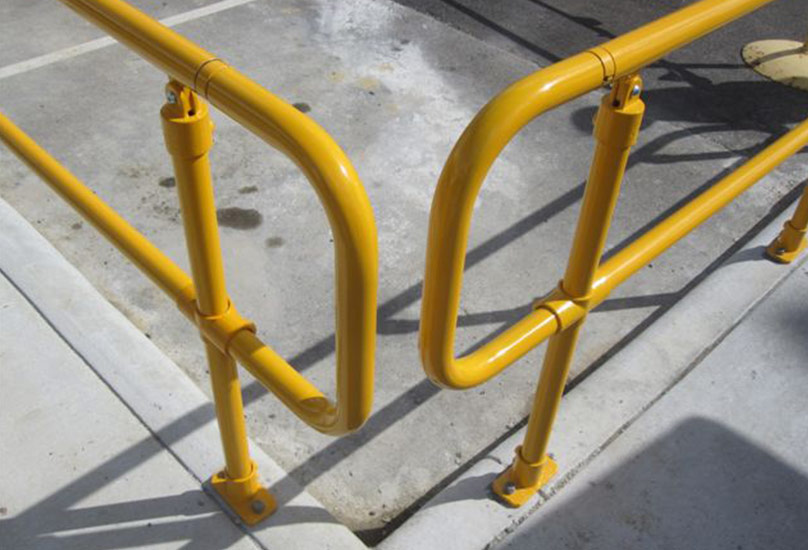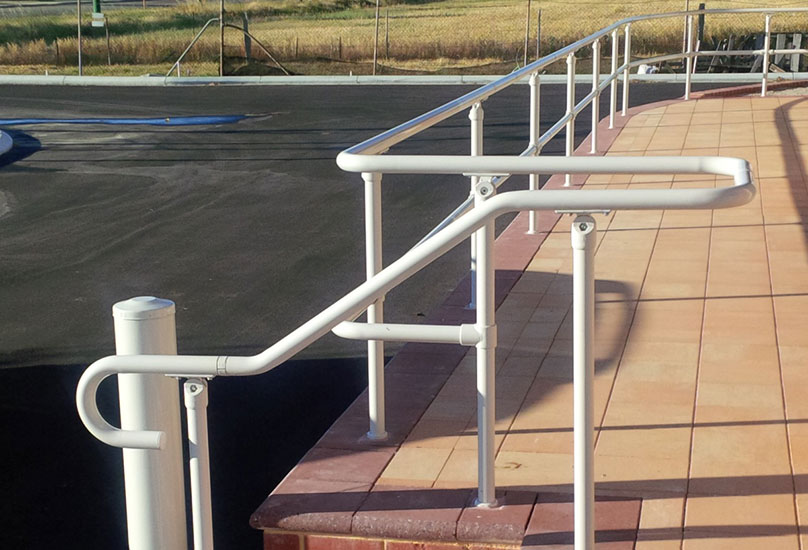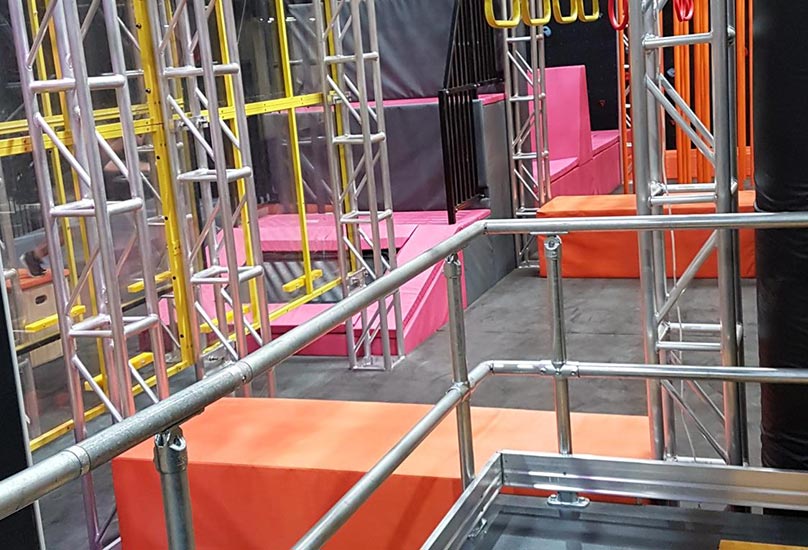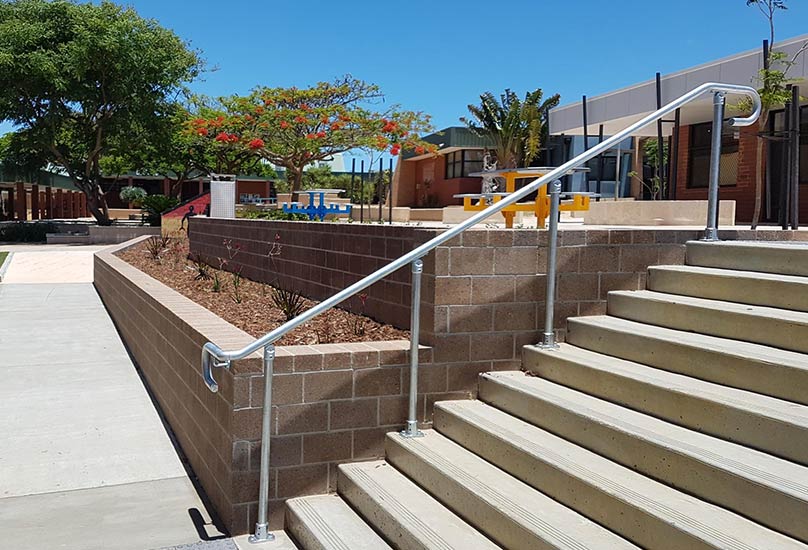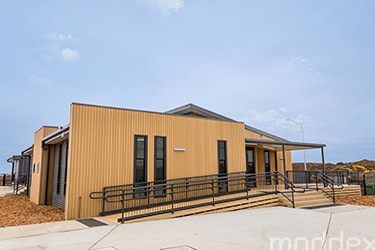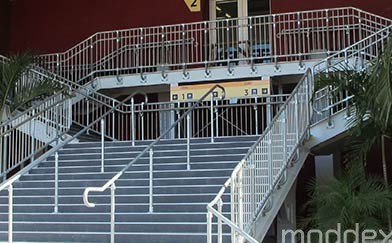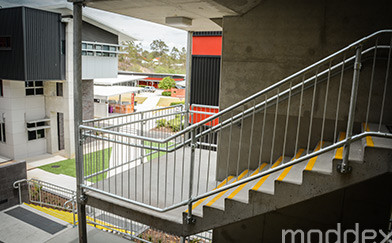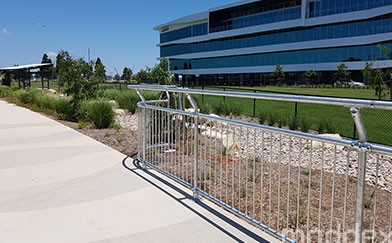It is rare for a major handrail installation project to go without a hitch. And nowhere are unexpected hindrances more common than on construction sites when it comes time to installing the carefully designed, minutely planned handrail system.
Often installers start work on a site only to discover that a previously unknown or unexpected obstruction prevents the planned positioning of the handrail. It might be a downpipe that didn’t appear on the building plans, or it could be the fire hydrant that has recently been affixed beside the path – exactly where the handrail needs to pass. Either obstacle – or any other kind – prevents the handrail from being installed as planned.
To literally get around the pipe, hydrant etc, the installer needs to bend or adjust the handrail. But the angles of the bend often need to be up to 90 degrees – and bending heavy steel handrails in situ is simply impossible without expensive portable equipment.
Installation slowed down due to unplanned obstructions
Time and again, industry-leading Australasian handrail manufacturer Moddex encountered this problem on its job sites. No amount of pre-planning seemed able to prevent it. Always keen to be at the forefront of innovation, Moddex convened its design team, explained the problem and asked it to come up with a suitable solution that would work in every situation the company came across. Always up for a challenge, the team conceived, tested and refined a new type of joiner that needed no welding, could be adjusted to fit while on-site and wouldn’t slow the installation process any more than necessary.
It came up with a unique range of swivel, straight and 90-degree in-line joiners (pictured right). Made from galvanised steel and marine grade aluminium, the new joiners comply with AS/NZS 1428 which governs public access areas and ramps for use by people with disabilities.
An alternative to cutting and welding, in-line joiners can be installed in half the time it would take for a conventional welded solution. The joiners also eliminate the need to bring in heavy welding gear and set up a power source, instead requiring only a battery drill and rivet gun to install.
The simple convenience of the joiners is now used so often that Moddex designs them into all its projects. Instead of welds, which compromise structural integrity and are regularly the weak link where rust often first appears, the Moddex in-line joiner is a structurally sound and cost-effective solution to a perennial problem.
When combined with the ergonomic connector and the adjustable top rail fitting, Moddex’s modular handrail systems solves all those niggly problems that have plagued the industry for years.

